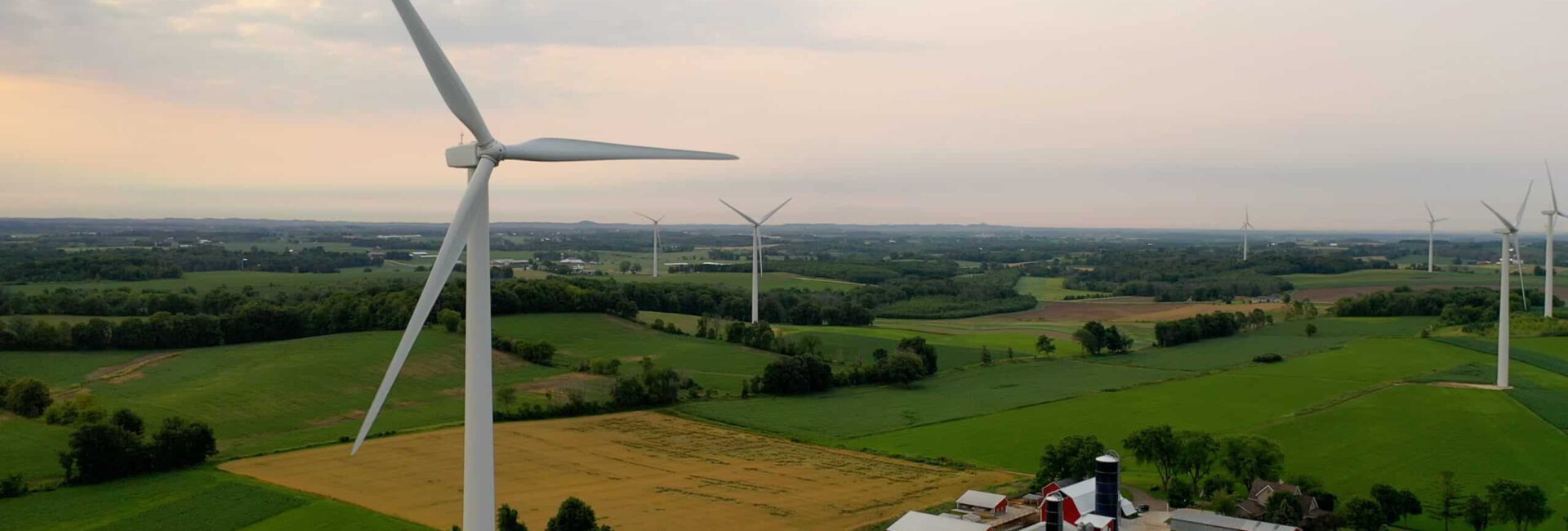Across the country, landowners are seeing new cash crops emerge in the form of wind, solar and other farm easements. Renewable energy opportunities can add additional revenue streams and diversify income for farmers, ranchers, and landowners. However, many are concerned about how these projects will impact their land and drainage systems in the long run. The key, according to Pinion land advisors, is finding a developer that understands where you’re coming from.
Case in Point: Developers Should Recognize What Matters Most
Pinion provides land advisory for Apex Clean Energy, a renewable energy company, to ensure they protect every acre of land their projects impact.
“When talking with farmers, one of the first questions they ask is how we will take care of the drainage system,” shares Alan Moore, Senior Development Manager with Apex Clean Energy. “Land is their most important asset, so being a good neighbor and a good land steward is our top priority.”
Below, we’ve outlined three critical practices that Apex takes with each of their projects in order to highlight the key areas you should address with a developer. A reputable and trust-worthy developer will implement these practices to ensure the best, most protected outcomes – not only now, but for the long term.
3 Ways to Ensure Land Stewardship
1. Approach partnerships with long-term vision.
Most lease agreements average 30-50 years. So, the land will likely pass through family hands over the span of those three to five decades. Developers should view projects not just as a lease, but as a generational partnership that affects the landowners, their children, grandchildren, and the surrounding farms and community.
With this mindset, the developer should be willing to work to understand the landowners’ plans for drainage, land improvements and other long-term land use. They should also work with local leaders and community members to ensure projects complement the community’s vision, keeping them involved through the leasing, permitting, construction and operation of the project.
2. Consult with a third-party land advisor.
Apex has many wind projects in the Midwest, with a focus on central Illinois. With the flat lands and fields that go on for miles, Illinois is rife with opportunity for wind energy. However, Apex understands that they are developing on some of highest-yielding and most agriculturally competitive counties in the U.S. in large part because of what farmers have put back into the land with infrastructure and drainage.
To ensure the land infrastructure is protected, a developer should be willing to consult with a third-party advisor. In this instance, Pinion Land Advisory acts as an unbiased, third-party land expert to ensure the best interests of both parties are met.
“We provide risk assessments and estimated costs, educate the engineering team on how ag surface and subsurface water interact with the installation and create holistic engineered designs,” said Quint Shambaugh, Pinion’s land advisory expert. “Essentially, this establishes trust between both parties and helps mitigate the risk of damage, designing projects around and for ag infrastructure.”
A third party can advise on sub-surface and surface drainage solutions – considering current infrastructure and future installations, as well as the entire watershed. Since drainage tile doesn’t stop at property lines, damaged tile can impact the health of neighboring properties and communities. The right partners will work to ensure the land infrastructure is protected and will guide the developer with what’s needed to be a good neighbor and a good steward.
3. Prioritize proactive maintenance.

Sometimes it’s possible to fix problems on the backside, but often – especially when it comes to sub-surface drainage – quality is just never the same. The damage is long-lasting and hard to reverse. For this reason, Apex takes a forward thinking, proactive approach to drainage remediation and mitigation. Rather than dealing with issues after they’ve happened, proactive developers will work to prevent them.
Apex utilizes Pinion’s land advisory team as qualified third-party experts for predictive modeling and predictive analytics. The analytics incorporate local drainage practices, soil types, topography, and water conveyance, to pinpoint the location of unmarked or unmapped tile.
This helps the development team design infrastructure that coincides with the current and future drainage needs of the footprint – preventing damage on the front-end.
“When renewable developers are transparent and proactive, like Apex, it sets the project up for greater success today and for generations to come,” says Shambaugh. “It allows landowners to have the best of both worlds – a quality wind or solar project and sound agriculture infrastructure.”
Pinion’s land advisory team helps utility and renewable energy companies mitigate risk and simplify agricultural surface and subsurface drainage identification and remediation. They also serve as a trusted partner for landowners, helping to navigate opportunities and protect their land for generations to come. Contact a Pinion land advisor to learn more.
Apex Clean Energy is a full-service renewable energy company harvesting the wind and the sun with the help of farmers, landowners, and communities across the country. Nearly three dozen Apex-originated wind and solar facilities are now operating in the United States, powering the equivalent of 3 million homes.






